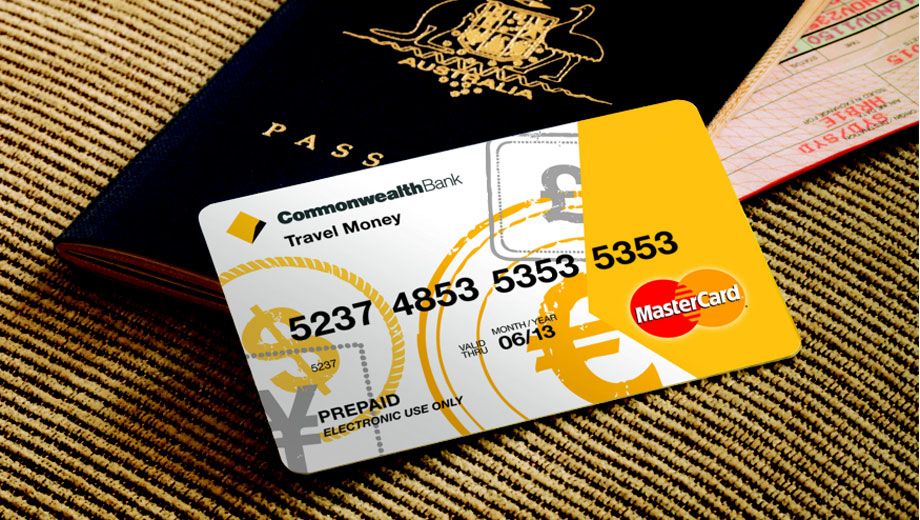Disclaimer
Executive Traveller may receive a commission when you apply for these credit cards via our links.
The information provided on this page is purely factual and general in nature. You should seek independent advice and consider your own personal circumstances before applying for any financial product.
Prepaid travel money cards are the hot new ticket for travellers, but how do they stack up against the credit card or debit card you're already carrying?
As is so often the case, the answer is "it depends".
Travel money cards
If you're going to transfer enough money for your whole trip onto the card at the time of purchase, then prepaid travel money cards are good value.
If you need to reload your card during your trip, however, you'll be hit with a 1.1% surcharge – for example, an extra $11 to load up $1,000.
Either way, the exchange rate is locked in -- so you're covered against a sudden dip in the Aussie dollar. (On the other hand, should the Kanga bounce back up you'll still be stuck at the lower rate.)
With most money cards there's an initial upfront purchase fee of around $10-15. This fee also covers the initial transfer of cash onto the card. (Note that if you buy the card through Australia Post, you may be able to get this fee waived entirely.)
However, there are some 'gotchas'. If you buy a travel money card for US dollars, and later use it another country, the card provider will charge you a 'wrong currency' conversion fee. This is typically comparable to the 3% fee charged by most credit cards for overseas purchases.
Travelex has a really nasty fee to catch people out here: Travelex Cash Passport customers who buy something in what is considered the wrong currency are slammed with an 8.45% fee on the spot!
Cash withdrawals from a prepaid travel money card at a foreign ATM cost $2 to $4 each time, depending on the country you're using the card in – but this is generally cheaper than using a standard Australian bank debit/credit card to withdraw money.
So, to summarise: if you buy a prepaid travel money card at Australia Post you can transfer cash onto it with no fees, and spend money from it with no (or low) fees too.
However, in a worst case scenario, you'll buy a Travelex Cash Passport card from a Travelex booth, pay $15 on top of the initial cash load, an extra 1.1% to reload it, and face another 8.45% slug if you buy goods in the 'wrong currency'. (On top of which, Travelex is the only travel money company to hit you with a $10 fee if you wnat to 'cash out' your card by reclaiming left-over money at the end of your trip).
So, clearly, if you're not careful about how you purchase a prepaid travel money card, they can be costly.
Australian bank credit/ATM cards
In comparison to travel money cards, using your own bank's credit or ATM card is a simpler process. It provides direct access to the money in your bank account (or your credit card credit limit).
You also benefit from having your money converted at the bank's wholesale exchange rate, rather a rate which can have hidden padding in it. (For example, there are many retailers of rebranded Travelex Cash Passport cards, and they set their own exchange rates.)
Banks do charge continual fees on international purchases – typically 3 - 3.5% profit margin on top of all foreign purchases (that's $30 - $35 on $1,000). Evidently, if you're going to be spending many thousands of dollars on an international trip, a preloaded travel money card can be better value than paying this surcharge on all purchases.
In terms of ATM cash withdrawals, normal Australian bank accounts and credit cards charge around 3% of the withdrawal amount plus $5 each time (for example, an $11 fee for a $200 withdrawal). Again, travel money cards are much better value here: they don't charge a percentage surcharge on withdrawals, just a flat dollar fee, which is typically lower.
However, there are a few card types that are exceptions. GE Finance has a credit card called 28 degrees Mastercard that charges no foreign exchange fees, and has free cash withdrawals at overseas ATMs. We've reviewed it extensively here.
NAB also has a bank account called NAB Gold Banking which provides a Visa Debit Card which similarly has no overseas ATM withdrawal fees. That said, it has a $10 per month fee (waived if you deposit $5,000 per month into it). Note, this fee-free overseas deal only applies to the NAB Gold Visa Debit card, not the NAB Gold credit cards.
One very important thing to be aware of when using your own ATM or credit card overseas is that foreign ATMs can charge very high fees for usage, and some countries don't require this to be disclosed before the transaction goes ahead.
For example, Australian Business Traveller staff have been hit by a $15 fee for a transaction at an English-language ATM in a five star hotel lobby in China. The ATM gave no warning of this.
Prepaid travel money cards and Australian bank debit/credit cards are equally vulnerable to this, unfortunately.
For more details, including full price comparisons, see:
- Compared: best travel money cards in Australia
- Cheapest currency exchange outlets in Australia
- Travel money and currency exchange money saving tips
Disclaimer
Executive Traveller may receive a commission when you apply for these credit cards via our links.
The information provided on this page is purely factual and general in nature. You should seek independent advice and consider your own personal circumstances before applying for any financial product.


14 Apr 2011
Total posts 18
Regarding:
> Gold Visa Debit card -- not the NAB Gold credit cards
I can confirm that if you have linked your credit card to the NAB Gold Banking transaction account that this can similarly be used for fee-free withdrawals when abroad.
Just be sure to have the account linked to the “Cheque” button as not all ATMs abroad provide the “Cheque” and “Savings” choice, instead they use a default account, which seems to be the account linked to the primary position in the system, which so happens to be “Cheque”.
In this way your credit card can become a backup card for access to your transaction account – handy in the event of loss or theft of the Gold Visa Debit card.
Account linkages can be changed over the phone.
08 Mar 2012
Total posts 1
I really, really hate my ANZ travel card. I bought it before going to Spain 2 years ago and put about 4000 euros on it. Paid for the card, and got a fairly ordinary exchange rate. Using it like a credit card was going to be free, with a price for cash withdrawals.
While in Spain I tried to use it to pay for hotels and other purchases but gave up after a few times. It was usually accepted eventually but only after scrutiny be several staff and the manager. It doesn't have a name or signature -- they didn't want a pin either. It was generally mortifying.
I brought it home and kept it. Of corse it is relatively devalued now with changed exchange rates. Recently I have been paying for hotels and tours for another trip to Spain. Using it online seemed like a good solution but, alas, paypal decided I was a fraudulent user, cancelled a transaction and barred the card without telling me.
So it is a great card for saving your money.
I really hate it.
Singapore Airlines - KrisFlyer
02 Oct 2012
Total posts 1
Sadly, NAB has withdrawn their Gold Banking product, which is a shame as they were very good.
Another bank with the same features is Citibank VISA debit. I travelled through the U.S with this card. The only charges were the local ATM fees. However, their customer service and online banking is awful.
Hi Guest, join in the discussion on Compared: travel money cards vs credit cards